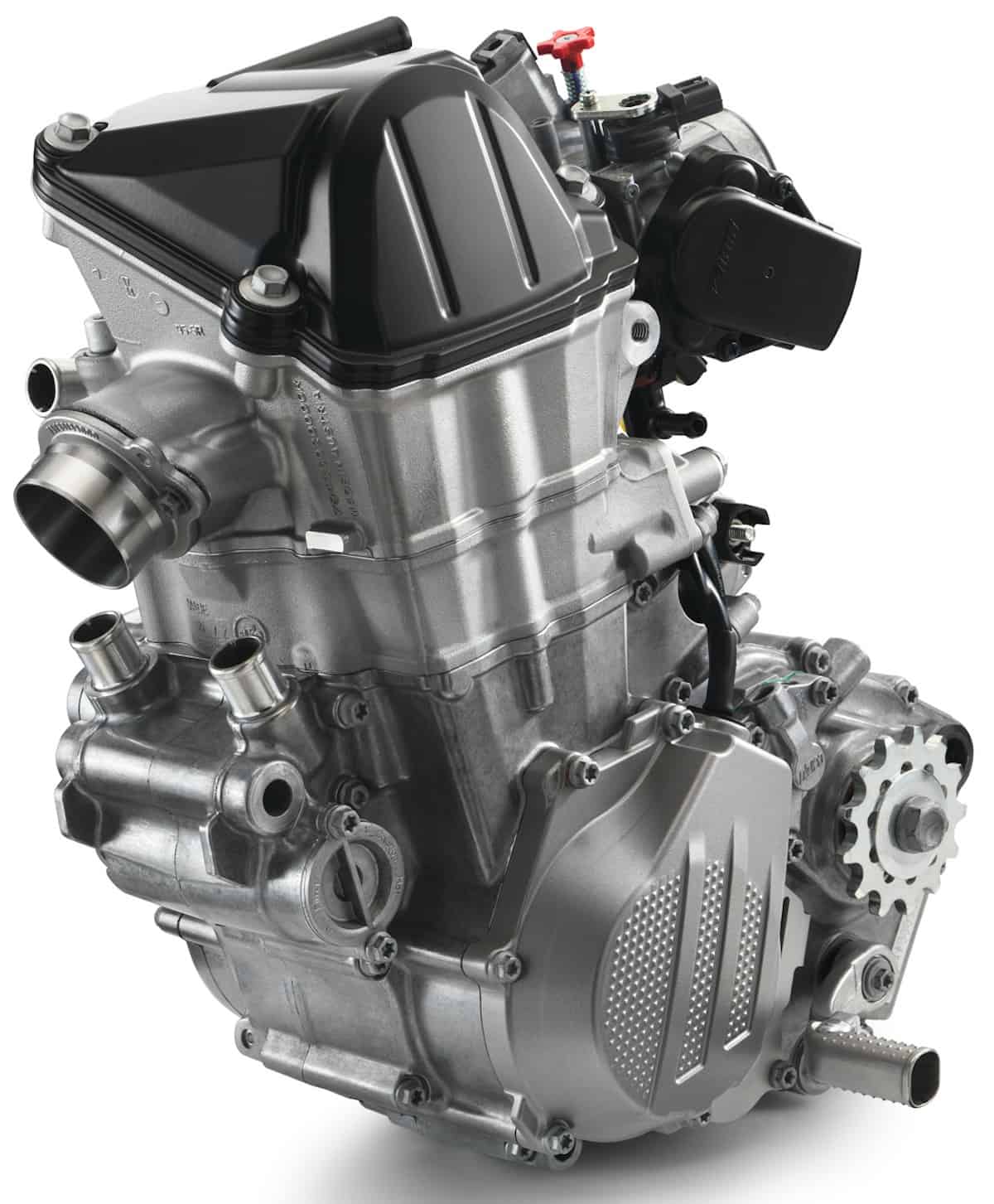ASK THE MXPERTS: SEEK AND YOU SHALL RECEIVE…FOR A PRICE
 Even KTM with its ultra-light weight design, hydraulic clutch, Pankl transmission, diaphragm clutch, multiple maps, launch control, traction control and new short stack cylinder head design only touches on the possible.
Even KTM with its ultra-light weight design, hydraulic clutch, Pankl transmission, diaphragm clutch, multiple maps, launch control, traction control and new short stack cylinder head design only touches on the possible.
Dear MXA,
It seems like everyone but KTM has stopped chasing new technology. Forks have gone back to the coil springs that were passé a few years ago. Centralization of mass just gets lip service today, and fuel injection is still in the port-injection mode of a 1960s automobile. What’s going on in the motorcycle industry?
There was a time when the promise of aluminum frames, die-cast engines, spool-style hubs, reduced oil capacity, mass centralization, fuel injection, massive weight reduction and hydraulic clutches made consumers believe that we were on the verge of a quantum leap in motorcycle design. Sadly, the opposite was true.
Weight. When first introduced, aluminum frames were lighter than old-school steel frames; but, now they are heavier than KTM’s chromoly steel frame. KTM was the first to successfully put electric starting on its bikes, but it took many years to get the weight down on KTM’s push-button-equipped bikes. Now, the Japanese brands are installing electric starters but are ignoring the lesson they should have learned from KTM’s struggle. Electric starting adds 5 pounds, which means you have to lose 5 pounds somewhere else on the bike to stay where you are.
Suspension travel. There was a time in American motocross when the most important number on a spec sheet was how much travel a bike had. Manufacturers boasted that they had 10 inches of travel, then 11 inches, then 12 inches, and finally they worked their way close to 13 inches. Today, no one cares how much suspension travel a bike has, because they have been distracted by the double whammy of the advent of air forks, the retreat from air forks and the return to coil spring forks (with their 3 pound weight penalty).
Centralization of mass. The centralization of mass concept was started by an engineer named Peter Dill, who built Honda a concept bike with the majority of the weight centered in the chassis. Honda didn’t move on Dill’s idea, but, decades later, the idea of putting not only the weight but also the rotating mass of the cams, valves and piston close to the center of gravity became of prime importance. The ultimate expressions of this were the slant-engine Husaberg and the backwards-engine Yamaha YZ450F. Today, no one is designing upside-down engines. Husaberg is gone, and Yamaha has been incrementally moving its cylinder forward and its hard to tout the benefits of mass centralization when the mass itself keeps getting heavier and heavier.
Fuel injection. ATK fuel-injected its bikes as far back as 1990, but no one followed suit. And when they did (starting in 2008), the first generation of fuel-injected bikes made less horsepower than their carbureted brethren. It is true that modern motocross fuel injection is a relic of the 1960 auto industry. Cars have moved on to incredibly advanced fuel injection systems, but not motocross bikes. It should be noted that the complexity of direct injection is more than what a dirt bike really needs. Today, you can only find carburetors on play bikes and mini bikes. Fuel injection is here to stay, but with it came thicker gas tanks, bulbous fuel pumps, heavier magnetos and bulkier electronics. The weight difference between a fuel-injected bike and a carbureted one is 5 pounds.
To answer your question, when the motorcycle manufacturers were selling one million offroad bikes a year (in the 1970s), the sky was the limit when it came to R&D budgets. Today, dirt bike sales are a fraction of their peak. With the decline in sales, the R&D budgets have shrunk, corporate interest has waned, Japanese manufacturers don’t want to spend the millions that it would cost to build a 220-pound KTM fighter and consumers will eventually balk at buying bikes with price tags over $11,000. It’s not that new technology doesn’t exists—it’s that the manufacturers don’t want to spend the money without solid sales numbers to make the cost worth the effort. The will just bolt-on the stuff that KTM pioneered and the consumers want. To everyone but KTM, the juice isn’t worth the squeeze.




Comments are closed.